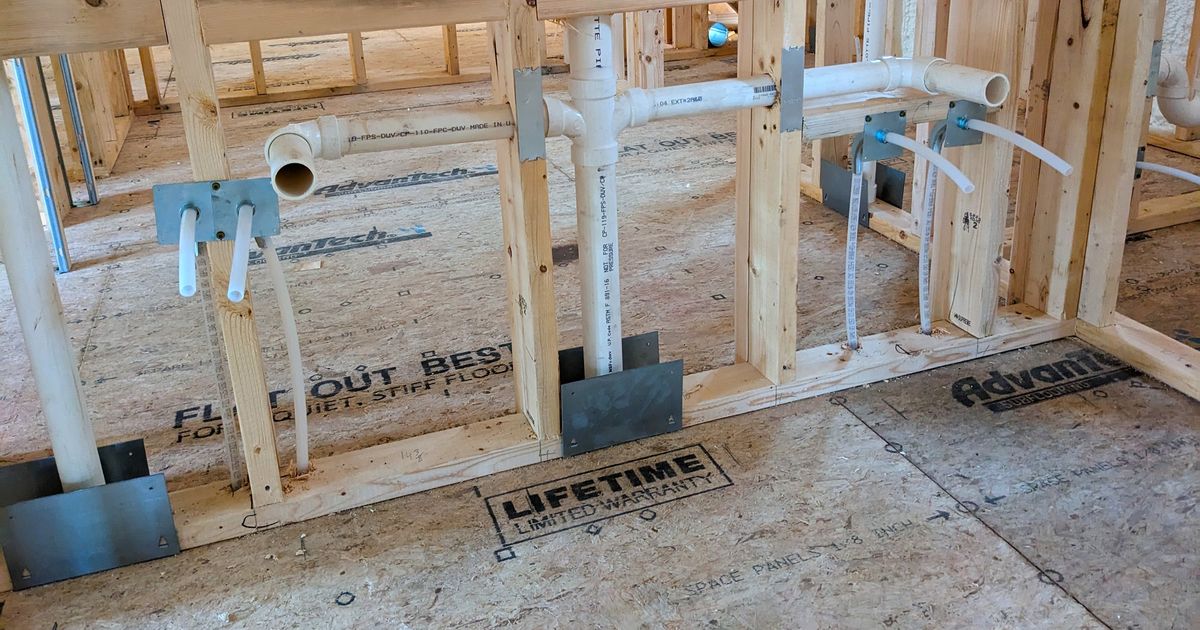I recently had a plumbing emergency in my own home. The main drain pipe under the basement floor got clogged with toilet paper. The culprit is a newer low-flush toilet in a basement bathroom. I’ve been a master plumber since 1981, and I used my flexible drain-cleaning snake to clear the clog. While I shoved the snake into the cleanout, I chastised myself for not buying 50 or 100 old-fashioned toilets made before the 1.6-gallon toilets became the new nasty normal.
Let’s talk about water before we go any further. In particular, let’s talk about Mother Nature’s plumbing system. It just so happens my college degree is in geology with a focus on both geomorphology and hydrogeology.
Study a map and you’ll discover that most big cities are located on major rivers. You’ll almost always discover that most small towns are on smaller tributaries. Water is the most basic need for life after all.
You may live in a city where you get your water from a public water system. That water almost always comes from a nearby river, large lake, or deep wells that tap into the massive hidden underground rivers that flow slowly through thick beds of sand and gravel.
If you’re a city dweller, your drain pipes connect to the city sewage system. Have you ever thought about what happens when you flush a toilet in your home? The instant the water starts to swirl in the toilet bowl, an equal amount of water enters the toilet tank. I call it the circle of water.
On a large scale, for every gallon of water taken from the river, lake or aquifer in your city, a gallon of water almost always is put back into the body of water where your huge sewage treatment plant disgorges treated sewage back into the river. If this didn’t happen, the sewage treatment plant would flood from having too much sewage and no place to put it.
The same thing happens at my house in rural New Hampshire. Each time I flush my toilet, I get 1.6 gallons of water from my well and an equal 1.6 gallons of water flows back into the ground via my septic system. This is why we should still have 3.5-gallon flush toilets. There is no water shortage. Water is constantly put back into the system. But I digress.
The drain pipes in your home should mimic what Mother Nature does. Lazy rivers have a current as the water travels towards the sea or ocean. While it might not seem like the water can move objects at this speed, it can with great efficiency. The drain pipes in your home should slope at least 1/8 inch per foot of run. For even better flow, shoot for 3/16 inch.
But beware, don’t put too much slope on a pipe. If a drain pipe or sewer has too much slope, the liquids in the pipe can outrun the solids.
The plumbing drain pipes in your home mimic Mother Nature with respect to sizing. Think of how smaller streams connect to larger ones. This happens because the accumulating water needs a channel with more capacity. Sinks in your home use a small 1.5-inch diameter pipe, while toilets require a 3 inch pipe. All of the fixtures in your home typically connect to a large 4-inch pipe under your basement floor or house slab, or in your crawlspace. This large pipe runs to your septic tank or connects to an even larger 6-inch pipe that runs under your property to a city sewer.
What about that pipe that pops out through your roof? That’s a vital part of your plumbing system. It’s a vent pipe. You may have more than one.
Many homeowners think plumbing vent pipes are like smokestacks in factories. They think the purpose of the vent pipe is to expel sewer gas outside. While that does happen each time the wind blows across the top of the vent pipes, the real purpose is to provide replacement air back into the plumbing system each time you send water to the septic tank or sewer system.
When no water is running in your home, the plumbing drain pipes are just filled with air. As soon as you flush a toilet, you introduce 1.6 gallons of water into the pipes. This water displaces the air and often pushes it ahead of the rushing water just like an elevator pushes air in an elevator shaft. Surely you’ve felt this air pouring through the closed doors in the lobby of a high-rise building.
If you don’t have air enter the system via the vent pipes, your plumbing system goes hunting for the air. The weight of the water from a flushed toilet is so powerful it can suction the water from a nearby shower, tub or sink trap to get the needed air. Perhaps you’ve heard this slurping sound before and not connected the dots. If you hear that sound, it means your vent pipes are clogged or your plumbing pipes were not installed correctly.
While I can’t come to your home to unclog your pipes, I can offer you help with your plumbing dilemmas. Just visit my www.AsktheBuider.com website for help or to ask me a question on my Ask Tim page.
Subscribe to Carter’s free newsletter at AsktheBuilder.com. Tim offers phone coaching calls if you get stuck during a DIY job. Go here: go.askthebuilder.com/coaching








